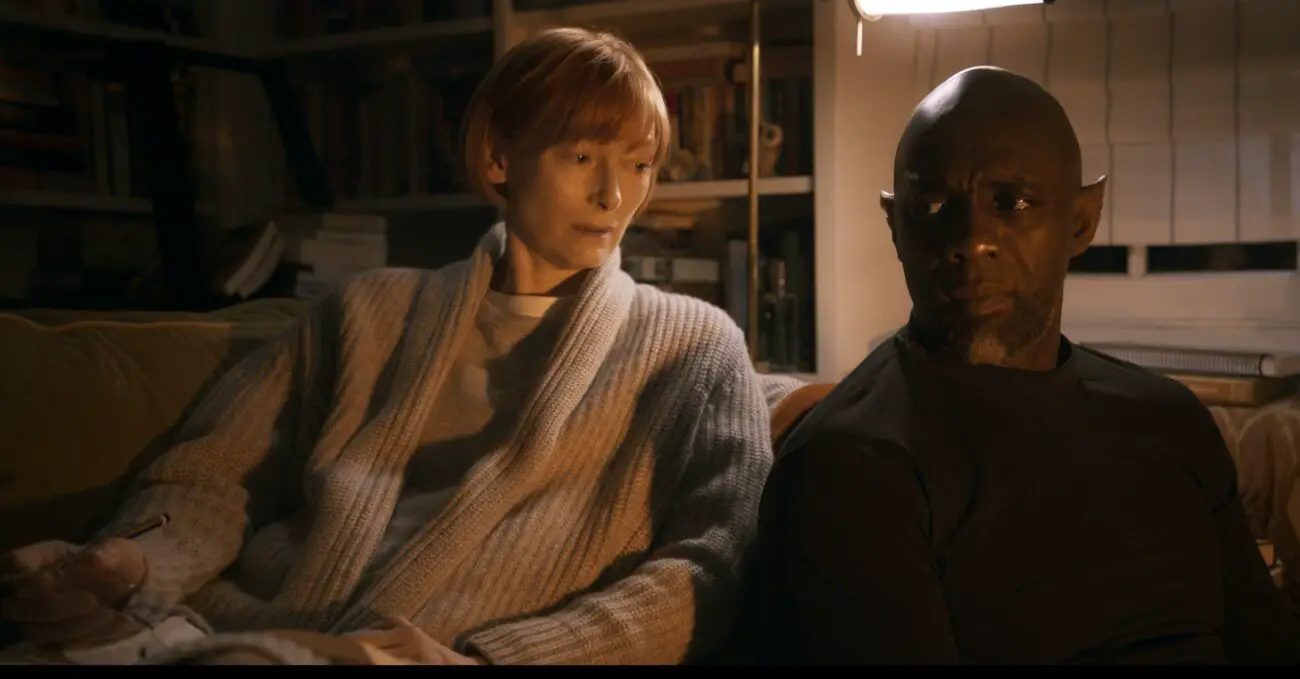Since the emergence of the Marvel Cinematic Universe (MCU), the film industry has increasingly relied on intellectual property and computer-generated imagery. Some of these films are transgressive and look incredible (see: Black Panther, Spider-Man: Into the Spider-Verse). Unfortunately, many of them are schlocky, uninventive, and hurt the eyes. The latest MCU entries possess weak CGI—the She-Hulk design is an abomination—and other films, like The Gray Man, make you wonder how a $200 million vehicle can look so bland. Common sense would say bigger budgets lead to better visuals. That’s starting to become far from the truth.
Three Thousand Years of Longing (TTYOL), the latest movie from acclaimed director George Miller, is a great example of proving that you don’t need big budgets to make a movie look good. On a modest budget of $60 million, Miller has crafted one of the most visually inventive and eclectic films of the past 5 years. Were it not for Everything Everywhere All at Once, there’s no doubt TTYOL would take the crows as the most visually creative movie of the year. However, where Everything Everywhere All at Once blended its imagery with a bombastic narrative, TTYOL lacks that seamless blend. For a movie about storytelling, ironically, TTYOL has a muddled script that prevents it from being an all-time fantasy classic.

Alithea Binnie (Tilda Swinton) is a narratologist and scholar who doesn’t have any complaints or desires in life. She’s content with what she’s accomplished so far. While at a conference in Istanbul, Alithea visits an old bazaar and buys an old lamp. When she rubs the lamp, a Djinn (Idris Elba) comes out and grants Alithea three wishes. Unable to come up with any wishes, Alithea listens to stories about how Djinn ended up in her hands and forms a special bond with him.
Miller’s previous directorial venture, 2015’s Mad Max: Fury Road, is one of the best films of the 21st century. It’s 120-minutes of adrenaline-pumping thrills in a wild world. Even though the film is set in a dystopian desert, Miller finds a way to make it look beautiful. With TTYOL, Miller has a plethora of colors and fascinating worlds at his disposal. It all starts with the release of the Djinn in the first act. The Djinn exits from his lamp in an exquisite smoke—it’s smooth and majestic, but daunting at the same time. And the Djinn is not just Idris Elba with prosthetics. No, this is a 10-foot Djinn, and Miller and the production designers do a terrific job in making Elba look larger-than-life (literally).

As Djinn recounts his life, the movie shifts to different periods in history: The biblical era with the Queen of Sheba and King Solomon, the Ottoman Empire, and early 20th century France. These three diverse settings allow Miller to create small universes rich in history. He inserts Djinn and modifies these popular stories. It never feels misplaced or ill-intentioned, but rather entertaining and impossible to keep your eyes off of. There’s passion, longing, and pain in these sequences. Djinn recounts all of this in a bathrobe to Alithea in a hotel room and this serves as the framing device for most of the movie. This portion—almost like a play—is the best part of TTYOL. The sets look authentic and Miller’s zany direction style is fully on display. It’s a shame the third act completely moves away from this fantastical storytelling.
The third act of TTYOL is a mixed bag, to say the least. We leave the hotel room and focus on the bond between Alithea and Djinn. Swinton and Elba’s performances are quite good—specifically Elba who’s in top form—but it’s hard to buy into an emotional connection between these two characters. While the storytelling portion of TTYOL is wonderful, it has the consequence of giving Alithea and Djinn less screen time to emotionally connect with the audience, especially Alithea who’s given a rushed character arc. Miller really has two movies here. There’s the Djinn stories movie and the Alithea-Djinn movie. Both of these could independently be great films, but together it doesn’t mesh well. This latter portion also drags a 105-minute movie that was moving at a strong pace earlier on. That being said, the visuals keep the viewer invested even in this weaker portion. Miller leans into surrealism and creates some mind-bending visuals.
TTYOL just doesn’t know if it wants to be a fantasy epic about a Djinn throughout history or a tender, unique love story between two people with many differences and one big similarity: loneliness. There will be (and are) some who will say it’s the Djinn’s stories that don’t work and they wished the Alithea-Djinn story was the focal point of the movie. And to an extent, their point is correct. Viewers watching TTYOL will latch on to one component of this film and will long for a version of a movie that has better execution.
Even with its flaws, though, the ambition of this movie is undeniable. In this current state of homogenized and algorithm-generated cinema, any semblance of an original film or something unique will always stand out. TTYOL is based on the short story, The Djinn in the Nightingale’s Eye, but it’s unlike anything that will be released this year. Just for that, it deserves credit. Does this aspect make it a great or timeless movie? No, but it’s a relief to see some filmmakers are still willing to take chances. It may not always work and it doesn’t have to. TTYOL does work for the most part and it’s a good thing this movie exists. Otherwise, we would be longing for three thousand years for a breath of fresh air like this.




The concept of longing has been a constant companion in the human experience. Longing can be found in ancient texts, ancient ideas and contemporary expressions. In the past three thousand years, the three longings have been used as an inspiring starting point for many literary works, a jumping point for philosophical discussions and a rhetorical strategy for convincing others of their ideas. The three longings—for home, for life and for peace—were also used as a jumping point for philosophical discussions on nature versus nurture, good versus evil and free will versus determinism. For example, René Descartes’s thought-process theory was anchored on his conviction that he had free will to choose between his thoughts. By choosing one thought over another, he made what he desired come true.